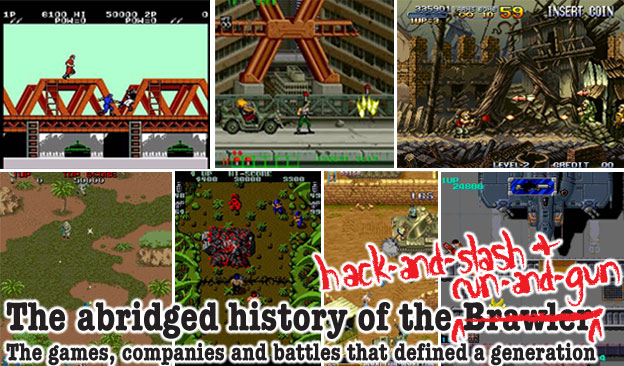
Players have enjoyed videogames for many reasons. One of the biggest draws was the escapism that gaming provided. Where else could regular people race around a European circuit in a million dollar car? Create or destroy an entire continent? Or go sky-surfing on a stolen jet? Gamers could play the role of some of the most amazing fictional characters ever created. The better the game was at creating that illusion of reality, rather than realism, the easier it was for gamers to identify with those characters and lose themselves in the experience. For brawling games players could play the role of the ultimate tough guys and girls against impossible odds. However not every gamer had the fortune of living near an arcade or had a chance to share in the group experience. For them the single-player game and hero featured within had to become even greater than those heroes in the arcades.
As far as brawlers went Thomas the Kung-Fu Master did very well in the one-player arena. He could beat up an army of opponents and dragons using his hands and feet only. Irem laid the foundation for most console brawlers as much as he did they arcade titles. But when developers cranked up those abilities and made the archetype as fantastic a martial arts master as ever written, say Ken from Hokuto No Ken (HNK) / Fist of the North Star, then the genre became instantly more appealing Ken was a master of a powerful fictional martial art. In the manga and anime series he could be seen killing people with a simple touch and make them explode with gruesome results with a punch or a kick.
Sega discovered the visceral draw of the character in the 1986 game Hokuto No Ken, which was localized to Black Belt Master in the USA because Nintendo had the HNK license in North America. The gameplay was very similar to Kung-Fu Master only that opponents would explode after Ken punched or kicked them. As technology got better this experience was made more memorable with the updated 16-bit Genesis graphics in Last Battle aka Shin Seikimatsu Kyuseishu Densetsu Hokuto no Ken. The 1989 title was for many in the USA a taste of the type of super fighter that could be at the core of a single-player brawling experience. The character was amazing in game Players could kick through ranks of soldiers with ease and even punch the blade edge of an axe as it flew towards them.
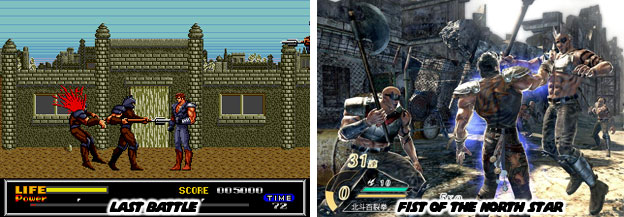
The character would come in and out of popularity over the decades. Appearing in fighting games, arcade games and console games for the better part of 30 years. His most recent appearance in Fist of the North Star: Ken's Rage was one of the better 3D efforts. Developed by Koei in 2010 it showed off the experience that they had creating several generations worth of hack-and-sash brawling titles. But before I talk about Koei I would like to digress and make a point of how much HNK had influenced the Japanese developers, especially those at Capcom.
Street Fighter was not the only Capcom title influenced by HNK. The brawler Viewtiful Joe was part henshin / sentai Japanese super hero study and part impossible brawler. Clover Studios, a Capcom founded company, released the title in 2003. It gave a new generation of console fans a reason to celebrate the hand-to-hand type brawlers that the previous generation had enjoyed so much. By keeping the game lighthearted they managed not to scare off parents with a harsh rating.
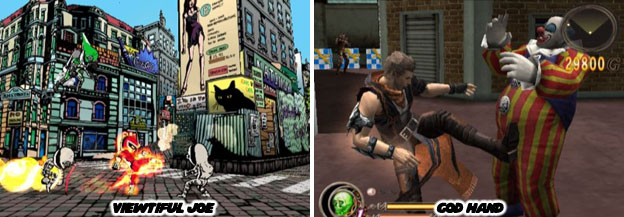
The same studio turned around and released the 3D brawler God Hand in 2006 for those that wanted to see the over-the-top characters and violence of HNK. The game was a homage to HNK as much as it was a parody of the genre. Players either got the jokes or were confused and possibly scared by them. As much fun as it was punching people into oblivion, several studios noticed that the genre could still be improved upon. That was why during the formative years of the brawler many different types of gameplay elements were explored. From fists and feet, to swords and guns, there would be a brawler for everyone.
Capcom did well for themselves in using the period piece Dynasty Wars as the backdrop to one of their early brawlers. Unfortunately the 1989 game lacked the control, design, animation and polish of Final Fight, which was also released the same year. What it did do however was help show that period piece brawlers, in this case one set during the Romance of the Three Kingdoms, could make for a great adventure title.

A few years later when the publisher had more experience they released a superior title with Warriors of Fate. The 1992 brawler was every bit as important to the legacy of the brawler as the King of Dragons or Knights of the Round. However that period-piece brawler would not really come to a head until Koei took the classical worlds and put them in 3D.
Dynasty Warriors started out as a 3D fighting game series around 1997. However the studio quickly shifted to the 3D brawler instead. Each battle became a part of a narrative where players got a chance to lead their general into battle and take out entire regiments single-handedly while the rest of the soldiers cleaned up the remaining few. While the game did not have the gore of the HNK titles, the characters were still capable of taking down dozens of soldiers with each attack. By 2011 Koei had released the 7th entry into the series with characters, moves and techniques even more fantastic than the previous generations.
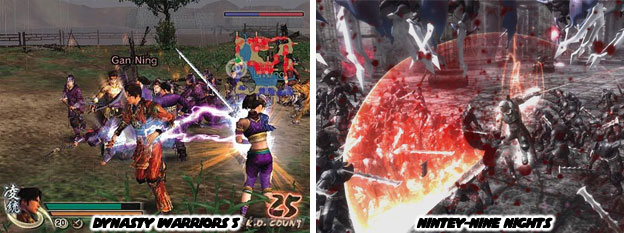
Q Entertainment was eager to try and outdo Koei at every level of the genre when they released N3: Ninety-Nine Nights in 2006. The body count went up exponentially for the 3D hack-and-slash brawler. Now gamers were capable of wiping out hundreds of opponents with a furious combo instead of dozens. They did not need to be part of a group or even visit the arcade to experience the mayhem that the genre provided. Yet the arcade was where Capcom had their eyes set that same year.
Capcom had announced that they would release a new fighting game in 2006. Many gamers went crazy with the news, speculating that Capcom were about to release the long-awaited Street Fighter IV. Instead, SF IV producer Yoshinori Ono unveiled the War of the Grail. It was a multi player arcade hack-and-slash. Not unlike Dynasty Warriors or N3 players assumed the role of a super-powered general of a mythical army as they did battle against other fantastic armies.
The character designs were created by Capcom great Kinu Nishimura. Kinu was an understudy of AKIMAN, the designer behind Chun-Li, before she worked on War of the Grail she was the lead artist on Street Fighter III.
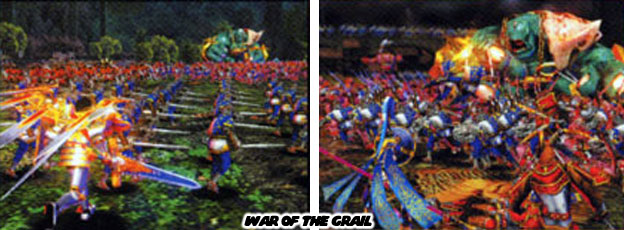
The game was cancelled before it got into arcades for testing. Yoshinori went on to work with artist Daigo Ikeno in designing the new characters for Street Fighter IV. However that did not mean that the hack-and-slash brawler would not be revisited by Capcom.

In 2011 they announced a new game titled Code of Princess for the Nintendo 3DS. From the media previews and the early screenshots many are likening this title to Guardian Heroes, with only less characters and archetypes to play as. Judging from the screenshots I am inclined to agree. Best of all the familiar designs from Kinu will be used to design the new crop of heroines.
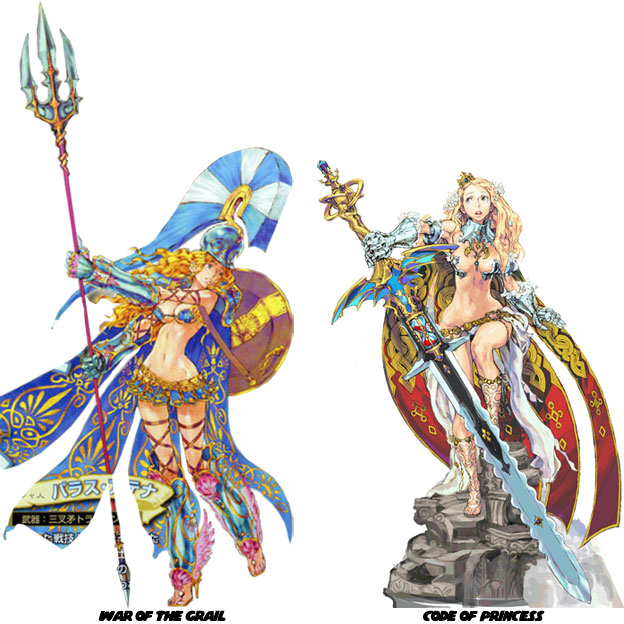
Yet Capcom would not make their biggest contribution to the changing face of the brawler through hack-and-slash efforts. Anyone that was involved in gaming over the past decade could tell you were they rewrote the book on the run-and-gun as well. As always if you enjoyed this blog and would like to sponsor me please visit my Patreon page and consider donating each month, even as little as $1 would help make better blogs and even podcasts!

No comments:
Post a Comment